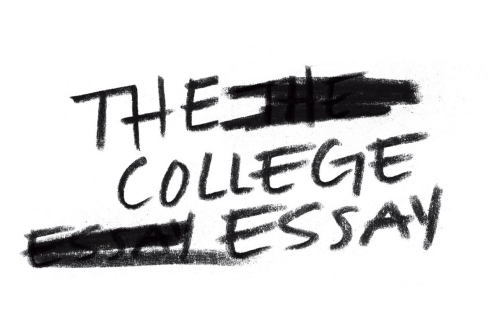 It’s that time of year again. May 1 is approaching and for parents of seniors it’s THE DAY that their student’s hard work is finally realized. National College Decision Day is the day your student has to decide which college they will attend. For some, it will be an easy decision. For others, like my daughter, it will be an excruciating one.
It’s that time of year again. May 1 is approaching and for parents of seniors it’s THE DAY that their student’s hard work is finally realized. National College Decision Day is the day your student has to decide which college they will attend. For some, it will be an easy decision. For others, like my daughter, it will be an excruciating one.
My daughter waited until the last minute—the very last minute—to decide. She was torn between two very similar colleges: one in her home state of Texas and one thousands of miles away in Massachusetts. Both offered the same financial aid, the same course curriculum, the same campus setting, and Greek life (#1 on her list). The final dealmaker was location. She had always wanted to attend college in Boston and that’s what tipped the scale.
Once your student has decided which offer of admission to accept, it’s time for celebration. It’s a time to look ahead, savor all the hard work, and prepare for the next few months. Here are ten things you should do after the decision is made:
-
Prepare for buyer’s remorse
Even if your son or daughter is sure about their college choice, buyer’s remorse will set it at some point during the next few months. It’s that overwhelming feeling that perhaps they choose the wrong college or made the wrong decision. It’s that feeling that perhaps they don’t want to leave home after all because of a) their friends, b) their boyfriend or girlfriend, or c) they are terrified to be on their own. Don’t react, just listen. They have to work through their anxiety.
-
Plan for orientation-both student and parents
It’s time to get the calendar out and look at student/parent orientation dates. This is one event neither you nor your student want to miss. Parents learn valuable information at orientation and students make much-needed connections with other students. Orientation will help your student ease into college life and help you cope as they make the move from home to independent living.
-
Keep looking for scholarship money
You may have a financial aid package in line, but you should never stop looking and applying for scholarships. College is expensive and even those $500 awards will add up. All throughout college your student should continue applying for scholarships.
-
Prepare for fall registration
It’s time to pour over the course catalog and academic requirements. Check out the college’s AP policies, which vary quite a bit from college to college. Your child still has time to sign up for May or June SAT II tests in preparation for fall registration. Official scores for these tests, however, will need to be sent to the college so they will have them on record when registering for classes.
-
Expect your emotions to be all over the place
By the end of the summer, you may be counting the days until your teenager leaves for college. Typically they become moody, argumentative and begin exerting what they feel is logical independence. There will be times when you wish they were already gone, and times when you wish they would never leave. It’s a whirlwind of conflicted emotions and every parent experiences them. Just as your student is working through this life change, you are coming to grips with it as well.
-
Book parents weekend now
This may sound like crazy advice, but if there’s one thing you do in this list—do this. Hotels fill up quickly for parents weekend, along with rental cars. Expect to pay higher than normal hotel prices because these dates happen every year and the hotels book quickly. If you are flying to the college or taking a train, book that part of the travel early as well.
-
Look at the calendar and plan for holiday travel
If your student has to fly home or take a train, look at the academic calendar and book travel for them. Waiting until the last minute may leave your student stranded on campus or force you to pay high prices for a last minute ticket.
-
Go shopping, but don’t overbuy
Scope out the area around the college for chains like Bed Bath and Beyond, Target or The Container Store. You can order online and arrange to pick up when you arrive at college. Wait until you know the layout of the room and your college student has had a conversation with their roommate. This will alleviate duplicate purchases and overbuying items that aren’t dorm essentials. Remember, these are “small” spaces. You and your student may be tempted to go crazy with the bling, but it’s better to wait until move in day for that.
-
Schedule a family vacation
If possible, schedule a family vacation. It may be the only time you see your son or daughter before they leave for college. They will be bulking up on friend time, significant other time, and anything away from their parents and the family. It’s normal; they are preparing for separation.
-
Have a serious money talk
Once the college decision is made, it’s time to reiterate what you expect them to contribute to their education financially and what you expect from them academically since you are also contributing a significant amount toward this education. Begin budgeting for expenses and discussing how they will pay for essentials during the year: either through a job or by you providing them with a monthly stipend.





 The college essay is perhaps the most frustrating part of the college application. Since the essay provides the opportunity for you to give the colleges a “window into your soul” so to speak, the essay is essentially a key component of the application. If you’re struggling with essay or just need some expert advice, where can you go for help?
The college essay is perhaps the most frustrating part of the college application. Since the essay provides the opportunity for you to give the colleges a “window into your soul” so to speak, the essay is essentially a key component of the application. If you’re struggling with essay or just need some expert advice, where can you go for help?


 It’s that time of year again. May 1 is approaching and for parents of seniors it’s THE DAY that their student’s hard work is finally realized. National College Decision Day is the day your student has to decide which college they will attend. For some, it will be an easy decision. For others, like my daughter, it will be an excruciating one.
It’s that time of year again. May 1 is approaching and for parents of seniors it’s THE DAY that their student’s hard work is finally realized. National College Decision Day is the day your student has to decide which college they will attend. For some, it will be an easy decision. For others, like my daughter, it will be an excruciating one.